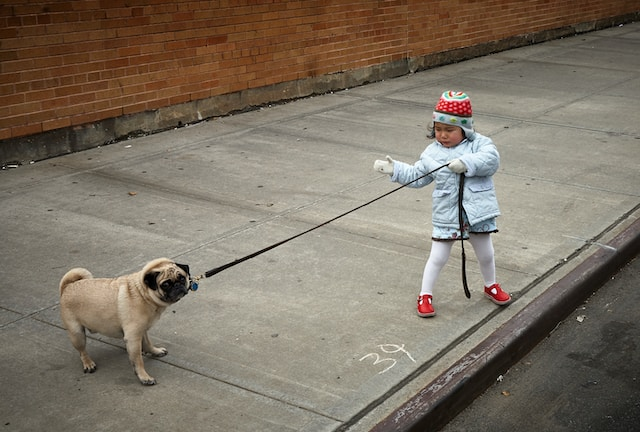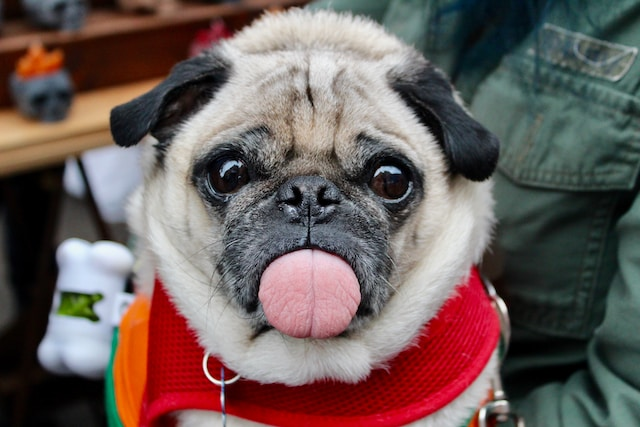737-215-3211

The Power of Positive Reinforcement in Dog Training
Dogs are remarkable creatures, known for their loyalty, companionship, and intelligence. Training your dog is an essential aspect of being responsible pet parents, as it helps create a well-mannered and well-adjusted pet. While there are various training methods available to unlearn unwanted behavior, positive reinforcement has gained significant popularity due to its effectiveness and humane approach.
Let's explore how this gentle, effective method can transform your relationship with your furry friend and make training sessions something you both eagerly anticipate!
What is Positive Reinforcement Dog Training?
Welcome to the world of positive training, where every treat, every praise, and every playtime is a step towards a happier, well-behaved companion. But what is positive reinforcement and how different it is from negative reinforcement?

Positive reinforcement means focusing on rewarding your dog's behavior to encourage their repetition. This approach is grounded in the principle of operant conditioning, which posits that behaviors followed by positive outcomes are more likely to be repeated.
Here's a closer look at positive reinforcement:
-
Rewarding Good Behavior: When your dog displays a new behavior you want to encourage, you immediately reward them. This could be with dog treats, praise, petting, or playtime.
-
Ignoring Undesirable Behavior: Instead of punishing bad behavior, all the good behaviors are positively reinforced and negative behaviors are ignored or redirected.
-
Consistency and Timing: Consistency in rewarding the desired behavior immediately after it occurs is key. This helps the dog understand exactly which behavior is being rewarded.
-
Gradual Reduction of Treats: Over time, the reliance on dog treats or constant rewards is reduced. The behavior becomes habitual, and the dog may continue to perform it with less frequent rewards.
On the other hand, negative reinforcement involves the removal of an unpleasant stimulus when the negative behavior occurs. For example, applying pressure on a dog's leash until it sits, and then releasing the pressure once it complies. This negative punishment method focuses on using an aversive stimulus to increase the likelihood of a behavior.
The primary differences between positive and negative reinforcement are:
-
Nature of Stimulus: Positive reinforcement uses a pleasant stimulus (like dog toys, treats, or praise), while negative reinforcement involves removing an unpleasant stimulus.
-
Focus on Behavior: Positive reinforcement focuses on encouraging good behavior, whereas negative reinforcement often focuses on stopping undesirable behavior.
-
Emotional Impact: Positive reinforcement generally builds a more positive and trusting relationship between the dog and owner, while negative reinforcement might sometimes lead to fear or anxiety.
Benefits of Positive Reinforcement
Positive reinforcement in dog training offers a myriad of benefits, making it a preferred method for many professional trainers and pet owners alike.

Here are some of the key advantages:
-
Strengthens the Bond Between Pet and Owner: When dogs associate their owners with positive experiences, like receiving treats or praise, it strengthens their bond. This approach fosters a loving and cooperative relationship, as opposed to one built on fear or submission.
-
Improves Communication: This method helps dogs understand what is expected of them. When a dog is rewarded for a specific behavior, it communicates that this behavior is desirable. This clarity makes it easier for dogs to learn and repeat these behaviors.
-
Builds Trust and Confidence: By focusing on rewarding desired behaviors, dogs feel more confident in their actions and are more likely to engage in appropriate behavior.
-
Increases Motivation: Dogs are naturally motivated by rewards. When dogs are motivated and when you use positive reinforcement, they become more receptive to learning and eager to please.
-
Encourages Good Behavior: By rewarding desired behaviors, positive reinforcement effectively teaches dogs what is expected of them. They quickly learn to exhibit appropriate behaviors resulting in pleasant consequences, making them more likely to repeat those behaviors.
-
Reduces Undesirable Behavior: Positive reinforcement methods focus on reinforcing desirable behaviors instead of punishing unwanted ones. By providing an alternative behavior to replace undesirable actions, dogs learn to make better choices and reduce problematic behavior.
-
Promotes Mental Stimulation: Training sessions based on positive reinforcement engage a dog's mind, providing mental stimulation and preventing boredom.
-
Suitable for All Dogs: This method can be used with dogs of all ages, breeds, and temperaments.
-
Long-Lasting Effects: Behaviors learned through positive reinforcement are more likely to be long-lasting because they're based on a positive association.
-
Promotes Problem-Solving Skills: This method encourages dogs to try new behaviors on their own. When they realize certain behaviors lead to rewards, they become more inventive and willing to try new things. Giving a reward for your dog's positive body language and behaviors is a helpful tool for most dogs.
Implementing Positive Reinforcement Techniques
Implementing positive reinforcement techniques in training your dog involves a few key steps to ensure effectiveness and foster a positive learning environment for your dog.

Here's a guide on how to effectively use these techniques:
-
Timing is Key: Deliver the reward immediately or at the exact moment after the desired behavior to ensure a clear association between the behavior and the reward. This immediate reinforcement helps the dog understand which behavior is being rewarded.
-
Start with Simple Commands: Begin training with simple commands like 'sit', 'stay', or 'come'. Once these are mastered, gradually move on to more complex tasks.
-
Consistency and Repetition: Use the same cues and rewards consistently to help the dog understand the desired behavior. Repetition reinforces the learning process and helps solidify the behavior in the dog's memory.
-
Use Varied Rewards: Experiment with different types of rewards, such as dog treats, verbal cues, or playtime, to determine what is most reinforcing for your dog. Mixing up the rewards prevents monotony and keeps the training sessions exciting.
-
Be Patient and Positive: Patience and a positive attitude are essential during training sessions. Dogs respond best to encouragement and praise. Avoid frustration or punishment, as it can undermine the trust and motivation built through positive reinforcement.
-
Consolidate Training with Everyday Life: Reinforce good behavior in various contexts, such as walks, interactions with other dogs, or meeting new people. This helps generalize the learned behaviors and ensures their application beyond training sessions.
-
Reduce Treats Gradually: As your dog becomes more consistent in performing the behavior, gradually reduce the frequency of treats. However, continue to give praise or affection to maintain the positive association.
-
Celebrate Successes: Celebrate your dog's progress, no matter how small. This positive attitude makes training a rewarding experience for both you and your dog.
FAQs (Frequently Asked Questions)
How long does it take for positive reinforcement to show results in dog training?
It depends on several factors, such as the dog's age, temperament, and the consistency of training. In general, dogs are quick learners, and you may notice positive changes within a few weeks of consistent training.
Can positive reinforcement be used for correcting unwanted behaviors?
Yes, positive reinforcement can be used to correct unwanted behaviors by rewarding the dog for exhibiting desired behaviors instead of the unwanted ones.
Are treats the only form of positive reinforcement?
No, treats are not the only form of positive reinforcement. However, positive reinforcement can also include verbal praise, toys, petting, or any other reward that the dog finds enjoyable. The key is to use whatever your dog finds rewarding.
What if my dog doesn't respond to positive reinforcement?
If your dog doesn't respond to positive reinforcement, it may be necessary to experiment with different types of rewards, adjust your training techniques, ensure consistency, or consult a professional dog trainer for guidance.
Is positive reinforcement suitable for training all dog breeds?
Yes, positive reinforcement can be used with all dog breeds. It's a versatile training method that can be tailored to suit individual dog breeds, temperaments, and learning styles. However, it's essential to understand your dog's specific needs and adjust the training approach accordingly.
Can positive reinforcement training be used alongside other training methods?
Yes, positive reinforcement training can be effectively combined with other humane training methods to enhance learning and behavior modification in dogs. However, it's crucial to ensure the methods used are compatible and don't employ aversive or punitive techniques that may undermine this method.

Get the Essential Dog Training Tools from Puppy Fever Pro!
Positive reinforcement is a powerful and humane method for training dogs. By harnessing the power of rewards and motivation, we can shape your dog's behavior, strengthen our bond with them, and create a harmonious living environment.
Through consistent training, patience, positive reinforcement, and the right tools and rewards, we can unlock our dogs' full potential with Puppy Fever Pro! Dog training tools such as collars and harnesses can also be helpful. For more dog training tips and tricks, visit our blogs!


Leave a comment